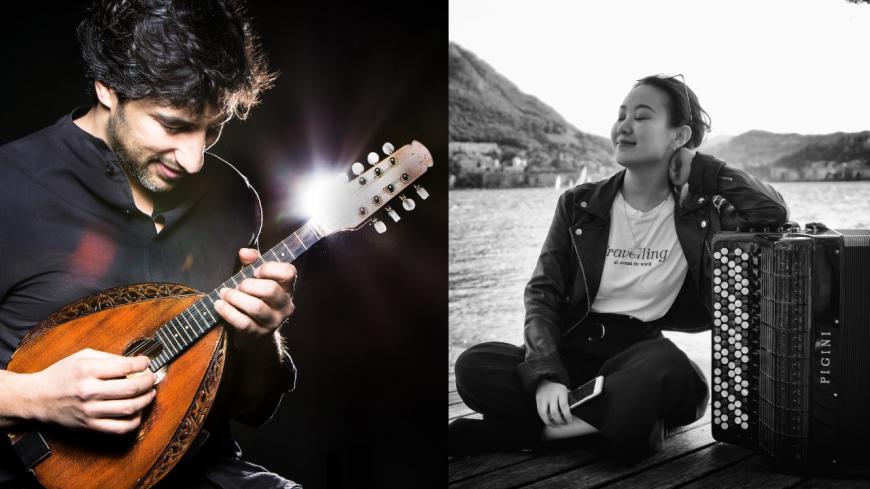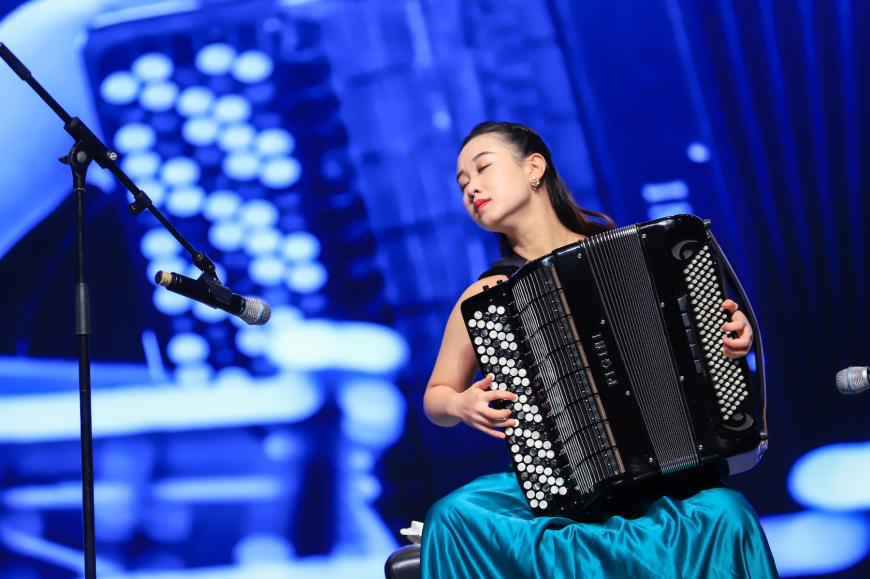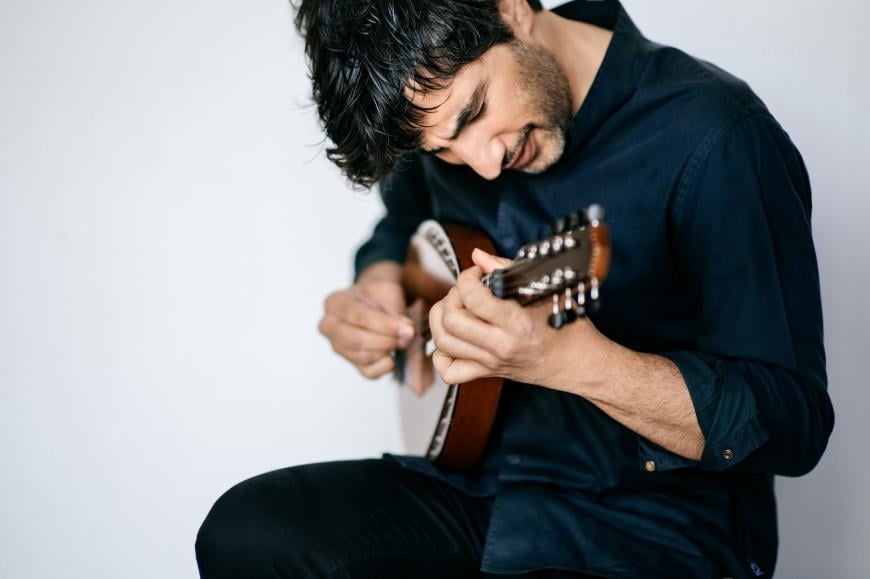
Arriving at Cal Performances’ Hertz Hall on Oct. 15 and toting her free-base (button) accordion, Hanzhi Wang will share a program with mandolinist Avi Avital that brings new meaning to an instrument more commonly associated with Oktoberfest.
Together and separately, Wang and Avital are recognized for their groundbreaking approaches to their instruments and to the classical repertoire. The music they perform has deep roots in the folk and popular styles of different eras and different countries. From this “common ground,” they have expanded accordion and mandolin repertoire with transcriptions of classical works and new commissions from contemporary composers.
The program for their concert on the UC Berkeley campus includes Fritz Kreisler’s Praeludium and Allegro “in the Style of Pugnani”; Igor Stravinsky’s Suite Italienne; the Chaconne from Bach’s Partita No. 2 in D Minor, BWV 1004, and selections from the Goldberg Variations; Béla Bartók’s Romanian Folk Dances; “Romanza Andaluza” from Pablo de Sarasate’s Spanish Dances, Op. 22; “Danse Espagnole” No. 1 from Manuel de Falla’s La vida breve; and Camille Saint-Saëns’ Introduction and Rondo Capriccioso.

In an interview, Wang says she appreciates the opportunity to introduce new facets of the accordion to people of all ages. “I have experience with kids after concerts who have been trained in classical music and have lots of questions. For the elderly generation, who might anticipate oompah-pah and polkas, I bring them new impressions. One of my favorite questions was from a young musician who asked, ‘How long can the bellows stretch?’ I told him it depends on the length of your arm. If you are tall, you can stretch it longer than I can. I tell people [that] imagining the breathing of an accordion as inhaling and exhaling is the most important part of playing the bellows. It’s finding the natural element that counts. All the music I am producing is about how I bring that singing feeling while I’m playing. I hope the expressive element can be heard.”
Wang’s accordion requires her to use her left hand without the benefit of sight, unlike a pianist, who can see all 10 fingers when playing. By switching a converter, she is able to play melodies with both hands, allowing her to perform the more complicated music of Bach, Stravinsky, Bartók, and other composers.
“This allows me to play from the piano score,” she says. “The traditional accordion cannot play the Goldberg because the left hand can only do, like, four chords. With the free-bass, I can play multi-melodies in the left hand. If a person doesn’t know anything about the accordion, they will be very pleased. There’s a lot of breathing in the box, beautiful melodies in both hands, and extremely technical parts.”
Wang grew up in Suzhou, in East China, near Shanghai. At the age of 5, she heard an accordion played in an Italian movie and was enraptured by the sound. At 13, she studied at the Tianjin Conservatory before moving to Beijing to earn her bachelor’s degree at the Central Conservatory of Music. She went on to earn her master’s at the Royal Danish Academy of Music in Copenhagen. She was featured on the Naxos label’s first-ever solo accordion CD, On the Path to H.C. Andersen, which was nominated for the prestigious DR (Danish Radio) P2 Prize in 2019. She was a first-prize winner of the 2017 Young Concert Artists International Auditions and had her New York debut in The Peter Marino Concert at Carnegie Hall’s Zankel Hall.
Wang has premiered new music by Sofia Gubaidulina, among other composers, and says commissioning works during the pandemic allowed for rich back-and-forth online communication. “Some composers want to get what you like. Some use other, less direct means. I like both approaches.”
Wang is enthusiastic about her onstage interactions with Avital and how their two instruments build layers and colors. “It’s not someone playing the melody and someone following. It a series of correspondences. The accordion is a great combination with the mandolin, which has such brilliant sounds. The accordion has vocal lines it can produce. Both hands can do long lines with vocal tones and the same legato as the mandolin. Avi’s playing is clear and brilliant, and the accordion helps build up the layers.”

In notes provided by Cal Performances, Avital says the two instruments are complementary. “Most of the pieces on this program are [originally] for violin and piano, and our instruments suit those roles perfectly: the mandolin takes the violin’s part and the accordion the piano’s. The mandolin has a sound with a relatively quick decay while the accordion has a more sustaining sound.”
Both Avital and Wang are pleased that the acceptance of the mandolin and the accordion in concert halls is growing and that training on both instruments at colleges and conservatories is increasing. “Our instruments are like the minorities in the classical world,” says Wang. “People have heard of Bach or Bartók, but they may never have experienced them played by accordion and mandolin. I hope people can open their minds to this new way of thinking about the accordion and hear the expressive element in all my playing.”



